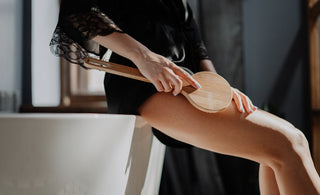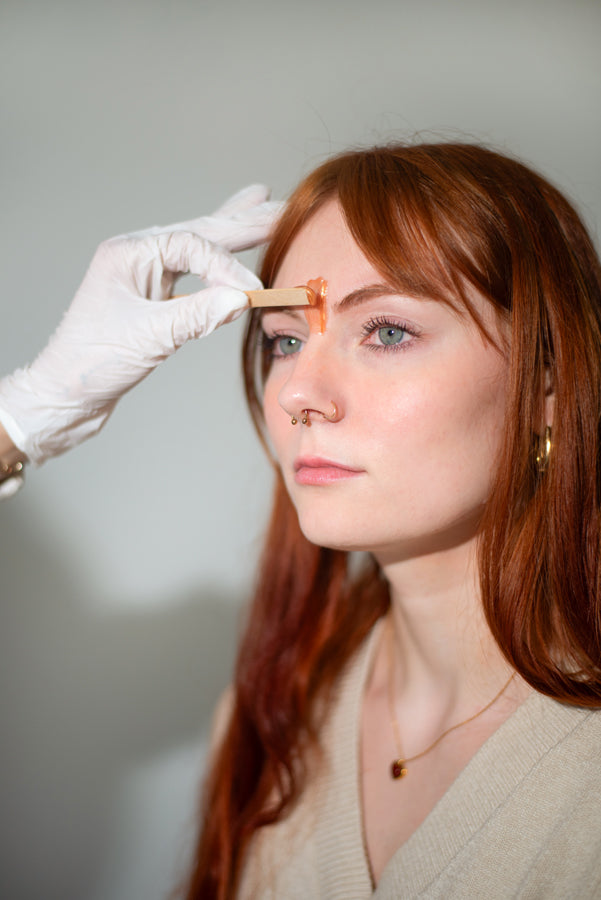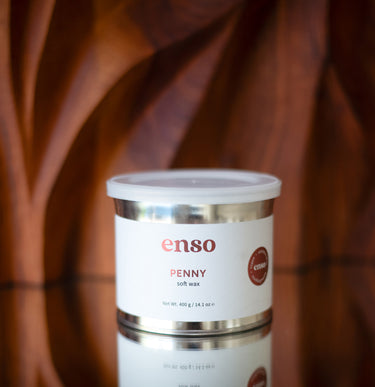
If you love the sensation of silky-smooth skin after waxing, but dread the appearance of painful, unsightly ingrown hairs, you’re not alone. Plenty of people experience trapped strands following hair removal. However, you can take steps to prevent these blemishes from returning. In this guide, we’ll cover why ingrown hairs appear after waxing and offer our best pre- and post-wax tips to help you avoid them.
What causes ingrown hairs after waxing?
Ingrown hairs develop when follicles become blocked or clogged with dead skin cells and other impurities, trapping hairs beneath the skin’s surface. Here’s what you should know:
Hair type and growth
Coarse, curly hair is more likely to become ingrown after waxing, as it’s prone to curling back into the skin as it grows. Fast-growing strands may also become trapped, especially if regular exfoliation isn’t already part of your routine. If your hair growth pattern varies or includes a swirl or spiral, waxing may cause more ingrown hairs.
Hair removal techniques
Improper waxing techniques and wax removal methods, such as removing wax against the natural direction of hair growth, may lead to more trapped strands. The same can be said for re-waxing the same area multiple times, increasing inflammation that blocks the follicle.
Lifestyle factors
Many lifestyle factors also contribute to ingrown hairs, including:
- Failing to care for your skin after waxing
- Wearing tight clothing that causes friction
- Excessive sweating and poor hygiene
- Lack of exfoliation
- Dry, flaky, and dehydrated skin
Related: Does Waxing Prevent Ingrown Hairs?
How to prevent ingrown hairs after waxing
Preventing ingrown hairs after waxing is part art, part science. Here's how to avoid ingrown hairs on your freshly-waxed skin:

Exfoliate before and after waxing
Eliminating dead skin cells is an ongoing process that begins before your first waxing session. Pre-wax exfoliation encourages wax to form a strong bond to hairs for effective hair removal.
In the days after waxing, exfoliating rids the skin of flaky skin that can block hair follicles. Be sure you wait until redness and irritation have subsided before incorporating an exfoliant like salicylic acid into your skincare routine.
Avoid tight clothing
Tight clothing causes painful friction and traps heat and bacteria against the skin, creating a recipe for ingrown hairs. This may be particularly true after a Brazilian or bikini line wax. Opt for loose, breathable clothing, including cotton underwear and a skirt or flowy pants in the days after waxing to avoid ingrown hairs.
Don’t shave between waxing appointments
Shaving between waxing appointments creates blunt, coarse stubble that’s more likely to become ingrown. It also disrupts your hair growth cycle, dampening some of the biggest perks of a consistent waxing routine, like long-lasting results and reduced hair growth. Instead, allow your hair to grow until it’s time for your next appointment.
Use post-wax products
Soothing topical products like aloe vera gel, hyaluronic acid serum, and nourishing moisturizers will keep your skin hydrated and minimize inflammation (and ingrown hairs!) after waxing. Stick with gentle, fragrance-free body wash, lotion, and sunscreen as your sensitive skin recovers.
Related: How To Prevent and Treat Pimples After Waxing
How to treat ingrown hairs after waxing
Sometimes, it’s impossible to completely avoid ingrown hairs after waxing. Here are a few tips to treat them quickly when they appear:
Gentle exfoliation
Exfoliating angry, red, inflamed skin isn’t a good idea. However, once the initial swelling and irritation have subsided, it’s safe to gently exfoliate ingrown hairs to promote the release of trapped strands.
Use a mild physical exfoliant like a textured wash cloth or chemical products, such as salicylic and lactic acids. Be careful not to overexfoliate. A little bit goes a long way.
Over-the-counter products
You can find specialized ingrown hair treatments containing various acids, benzoyl peroxide, and similar ingredients at any drugstore. While these products may help dissolve dead skin cells and reduce inflammation, they may be overkill for minor ingrown hairs or sensitive skin in the pubic area.
Consider starting with tea tree oil, a natural topical with powerful antibacterial and anti-inflammatory properties. Mix it with a small amount of carrier oil, such as jojoba, to prevent further irritation and discomfort.
Professional follow-up
Persistent ingrown hairs that become painful, swollen, or pus-filled may require a visit to your dermatologist. Infected hair follicles can lead to more serious complications, so it’s better to be safe than sorry when it comes to your health.
Related: Folliculitis After Waxing: What it is and How to Treat it
Enso Wax is your source for only the best in high-quality waxes for your clients!
Ingrown hairs can appear on your legs, face, and intimate areas after a waxing session, but it may be possible to avoid them with proper skincare techniques before and after each appointment.
Whether you’re battling trapped strands or simply searching for the best waxing products on the market, Enso Wax is here to help. Explore our curated collection of professional waxes and supplies, or reach out today to learn more!


